Elephant skin walls, robotic flower houses, “Baubotanik” buildings, a treehouse on Mars, and the Mother Nature future of urban design.
For someone used to living inside the steel, glass, and concrete existence of modern urban life, the idea of a building that blends live plants with robots, steel, and exotic new building materials like elephant skin-mimicking walls probably sounds like a hallucinatory vision of Jack and the Beanstalk—as reimagined by an unhinged science fiction writer. But such architectures are real, and experts say our urban future may be full of them.
What’s new is also old: For centuries, the Khasi and Jaintia tribes of Meghalaya State in northeastern India have been using the aerial roots of the Indian rubber tree Ficus elastica to create net-like bridge structures spanning rivers or valleys. In the Upper Franconia village of Lammersdorf, in Southern Germany, locals have been dancing on wooden platforms placed on treetops since time immemorial. Their ancient stomps are heard inside some of the most pioneering urban design labs today, where you will find architects, engineers, and robot designers reimagining what life in the city could be like in the future—fusing warm green with cold steel and saving the Earth while enhancing the physical and mental health of its dwellers.
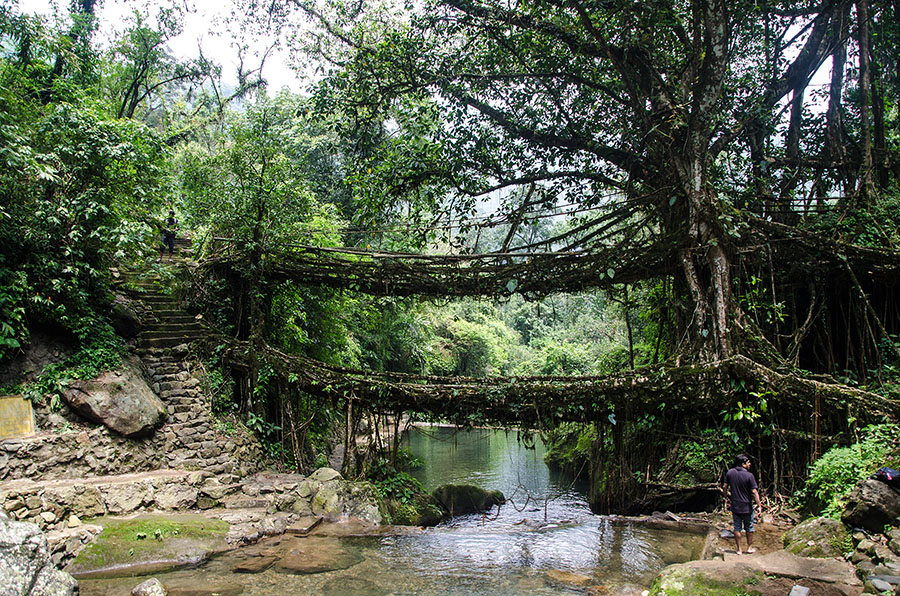
Like ping-pong for sycamores
People have built houses in trees from the dawn of civilization to the modern backyard playground, but nothing like the gigantic sycamore Plane-Tree-Cube, which has been growing in Nagold, Germany, since 2012. The tree has an area of 100 square meters and is a textbook example of Baubotanik, a building method in architecture that merges living with non-living construction materials. In reality, the imposing structure is made of 1,200 young plane trees, which are arranged in containers on six levels. With the help of metal scaffolding and other construction materials and by different means of pruning and carefully adjusting light conditions, Baubotanik guides the growth of trees into a certain form, slowly “bouncing” the branches in one direction or another as they grow. Over the years, the aim is for the tree tissue to grow around and bond with the non-organic materials and for the building to become “living.”
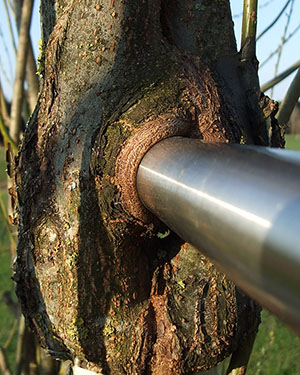
“We are playing ping pong with the tree,” says Ferdinand Ludwig, a professor of green technologies in landscape architecture at the Technical University of Munich, in Germany, and a pioneer of Baubotanik.
In time, the upper part of this space will be covered by a gradually emerging solid canopy, and this is where scientists want to bring humans. “Humans will become inhabitants of the tree canopy, which will be the space that creates the atmosphere and modulates the microclimate,” says Ludwig. His quintessential vision is to create a cluster of forest-cities, the inhabitable forest, as he calls it, which will bring with it all the health effects that follow living near a forest.
“The plants will purify the air and offer cooling down, shading, and so on. The healthy forest microbiome will come to the city, and with it a more balanced microclimate,” says Ludwig. Trees, vegetation, and transpiring water from plant leaves will help alleviate the urban heat island effect, a scourge in asphalt-and-pave metropolitan areas, which are expected to be increasingly roasting in the excessive summer heat, with climate change in full throttle. Additionally, when you look at dull, gray concrete, you are much more likely to get a headache and high blood pressure: Science absolutely proves it.
Trees, on the other hand, have a much more calming effect on the mind. “When the tree becomes the architecture, there is an interaction between humans and nature that is naturally soothing,” Ludwig says. You can literally touch nature when you live inside it—think of the bark of a surrounding tree—and become naturally attuned with all its changing seasons. Life in the trees is better, he says.
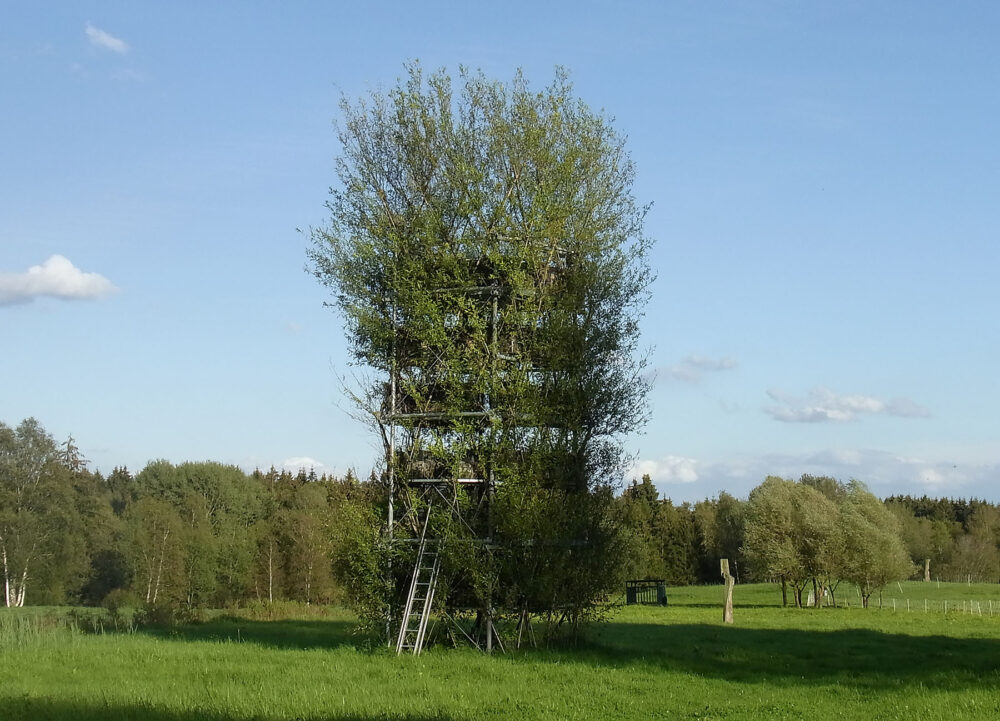
Throw out the blueprints
But what may be a dream for the arborist could be a nightmare for the architect: Baubotanik structures are a form of construction technically known as “autobiographical form finding,” which is a fancy way of saying even the designers don’t know exactly how they will turn out. Unlike their steel and glass counterparts built to strictly adhere to blueprint designs, Baubotanik structures are dynamic. Their development cannot be fully anticipated, and that could make many people nervous.
The human brain does not excel in dealing with ambiguity or uncertainty—especially where Mother Nature is concerned. That could account for why throughout most of human history, the natural wilds were seen as chaotic, cruel, and threateningly dangerous. But in more recent years, fields like ecology, evolution, and biomimicry—the science of engineering nature-inspired invention to solve human problems—have helped us appreciate how nature’s ill-gotten reputation for being capricious is unjust.
“Nature is the best at dissipating storms, cooling environments, sequestering carbon, and many of the things that we’re trying to do.”
“On the contrary, nature is the best at dissipating storms, cooling environments, sequestering carbon, and many of the things that we’re trying to do,” says Jamie Miller, expert on biomimicry and founder of Biomimicry Frontiers, a Canadian consultancy that applies biomimicry to the built environment. One of his company’s most representative projects is a biomimetic house they designed in Bengaluru, a large city in southern India.
They wanted the house to “breathe,” to self-cool, to collect buckets of water during intense rainstorms, and to be locally attuned to its place. They achieved this with nature-inspired design elements like stack ventilation and perforated walls for shading, mimicking the structures of mound-building termites.
They also designed an interconnected rain harvesting system to cool the house and feed a network of gardens that mimics the natural cooling ability of elephant skin. African elephants have an intricate network of cracks in their skin, which prevent them from overheating in the sun. While made of just rocks, the Bengalaru wall achieves the same cracked cooling effect. “When it’s hooked up to the rain harvesting system, the water will trickle over those rocks, Miller says, and “pull the hot air from the building over a longer period of time.”
By allowing nature to be the master architect and civil engineer, he believes we could see major improvements to human health. “When we’re closer to nature, our heart rate decreases, our stress decreases, and we’re more productive at work,” Miller says.
The social garden
The reciprocal relationship between humans and our natural environment is something Brian Helmuth, a professor of marine and environmental sciences at Northeastern University in Boston, knows all too well. In a recent study his team led at the Cognitive Laboratory of Environmental and Arts Research (CLEAR), they found that people who better understood the interchangeable feedback between physical environments and humans were more likely to devote time and resources towards nature’s conservation. “Environmental science has moved away from the simplistic idea that we need to protect nature from humans for nature’s sake and toward a vision that recognizes the codependent relationship between humans and our natural environments—specifically the realization that nature significantly affects human well-being,” Helmuth says.
In his own practice as a marine biologist, he has lived underwater for many days at a time. “I always emerged at the end of the mission feeling like I had become part of the coral reef in which it was situated,” he recounts. Every project that is trying to create a living space that is itself made of living organisms strikes Helmuth as an intriguing and deep foray into an uncharted territory with immensely therapeutic properties.
“You could claim that we bring nature or the forest back into the city on a higher philosophical level,” says Heiko Hamann, a professor of service robotics at the University of Lübeck, Germany—a field which seeks to design semi- or fully autonomous robots that assist human beings by performing what the latter deem repetitive, boring, and manual. Unlike dystopian sci-fi films where within a few years of society’s downfall, plants overtake the crumbling ruins of civilization in an uncontrollable and somewhat vindictive fashion, Hamann believes there are good solutions for nature to find its way around the city again harmoniously—or at least in a “controlled chaos” sort of way. He points to endeavors like Flora Robotica, a project he recently led to conclusion that sought to develop intimate symbiotic relationships between robots and natural plants and to explore the potential of plant-robot living spaces—and ultimately societies.
In the medieval city of Lübeck, scientists from German, Danish, Polish, and Austrian universities have created a high-tech “social garden” rich in artificial “roboflowers” and natural plants, all growing inside a lab. The artificial plants are robotic modules outfitted with sensors to detect and respond to stimuli from the physical environment with the purpose of supporting and monitoring the natural plants through scaffolding, watering, or controlling the light conditions. The biological plants, in turn, support and control the robots through functions such as holding the weight of the modules as they grow.
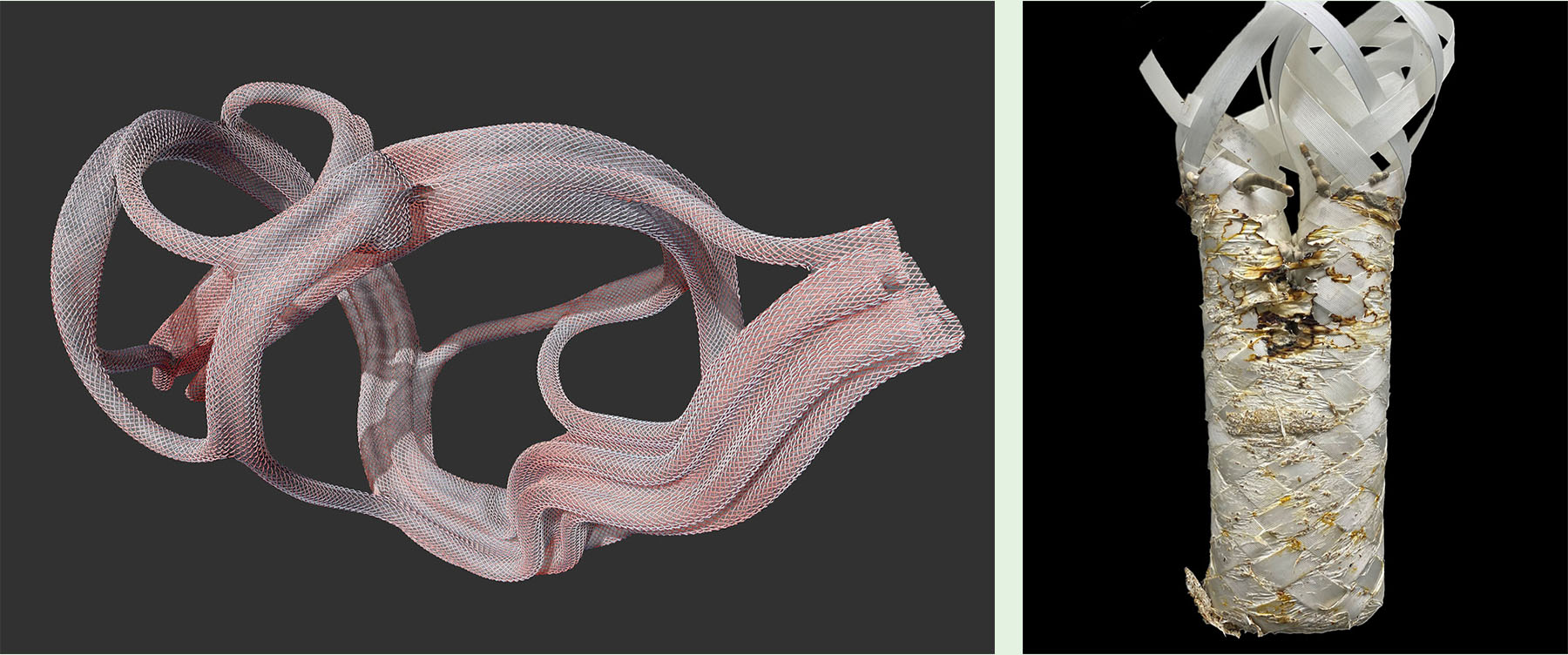
Say you want to build a wall in a social garden like this. You need three things for that: a big plank of wood, a living plant, and artificial intelligence. “The big picture is that we start overgrowing the big plank of wood with a living plant and, once the plant becomes strong enough to stand by itself, we can remove the original wall,” Hamann says.
The same approach could build walls, roofs, benches, and ultimately houses—entirely out of plants with some AI thrown in. Mind you, the result will be neither shiny nor perfectly shaped, and a full-fledged, ever-expanding roboflower house is not something you are likely to find on the market in the next few years. But, even if they need a decade to hit the markets, these types of symbiotic houses will transform urban living, Hamann predicts. “They will change the climate in the city. They will cool them down,” he says. “Psychologically, they will offer some much-needed isolation from urban chaos.”
The future of cities?
In a study that was published in Landscape Architecture Journal in September, 2020, scientists from the University of British Columbia argued that more gardens should be designed now that COVID-19 has forced cities into an introspection of how they should develop and operate. “Plants inspire the five senses. They create a multi-sensorial experience that helps healing,” says Daniel Roehr, a professor of landscape architecture at the university and one of the study’s authors. Roehr finds endeavors like that of Baubotanik very interesting, but he still has his objections.
“To use plants to build buildings is quite hypothetical at the moment. Plants need water, nutrients, and space,” he says. They also face a baroque array of regulations, the most prominent among them being fire regulations. “I’ve spent 30 years doing green roofs. Green roofs are just a little bit of soil on the roof and plants, and that’s already so complicated with all the fire regulations to keep them alive,” he says.
Whole buildings made of primarily plants would face even greater regulatory issues. They could be far more complex structures to maintain, and in some places like California, it’s unclear how they would meet seismic safety regulations. These buildings would also have to anticipate or deal with the unpredictable consequences of climate change on their living materials, and of course like any structure, they would have to abide by the patchwork of overlapping building codes specific to the one country, state, county, city, and sometimes even neighborhood. Living in a plant structure may soothe the mind, but the bumpy bureaucratic ride of building one could cause a lot of headaches.
Roehr believes the solution to upgrading urban life and health is simpler. “We should be creating lots of mini urban forests in the city, which will function as ecological corridors. Anywhere you have an open space in the city, you should be planting trees—local trees,” he says.
But it’s not like visionaries of living houses turn a blind eye on the bureaucracy. They know they are bound to face it. Case in point, Ludwig needed 18 months and a large amount of funding to conduct all the studies and convince local authorities to allow his team to proceed with the Plane-Tree-Cube. “Current building codes and building technology is modeled on non-living materials,” he says. He is trying to offset that cost by writing a textbook teaching students the art and science of building from scratch with living materials, and he is hopeful for the future.
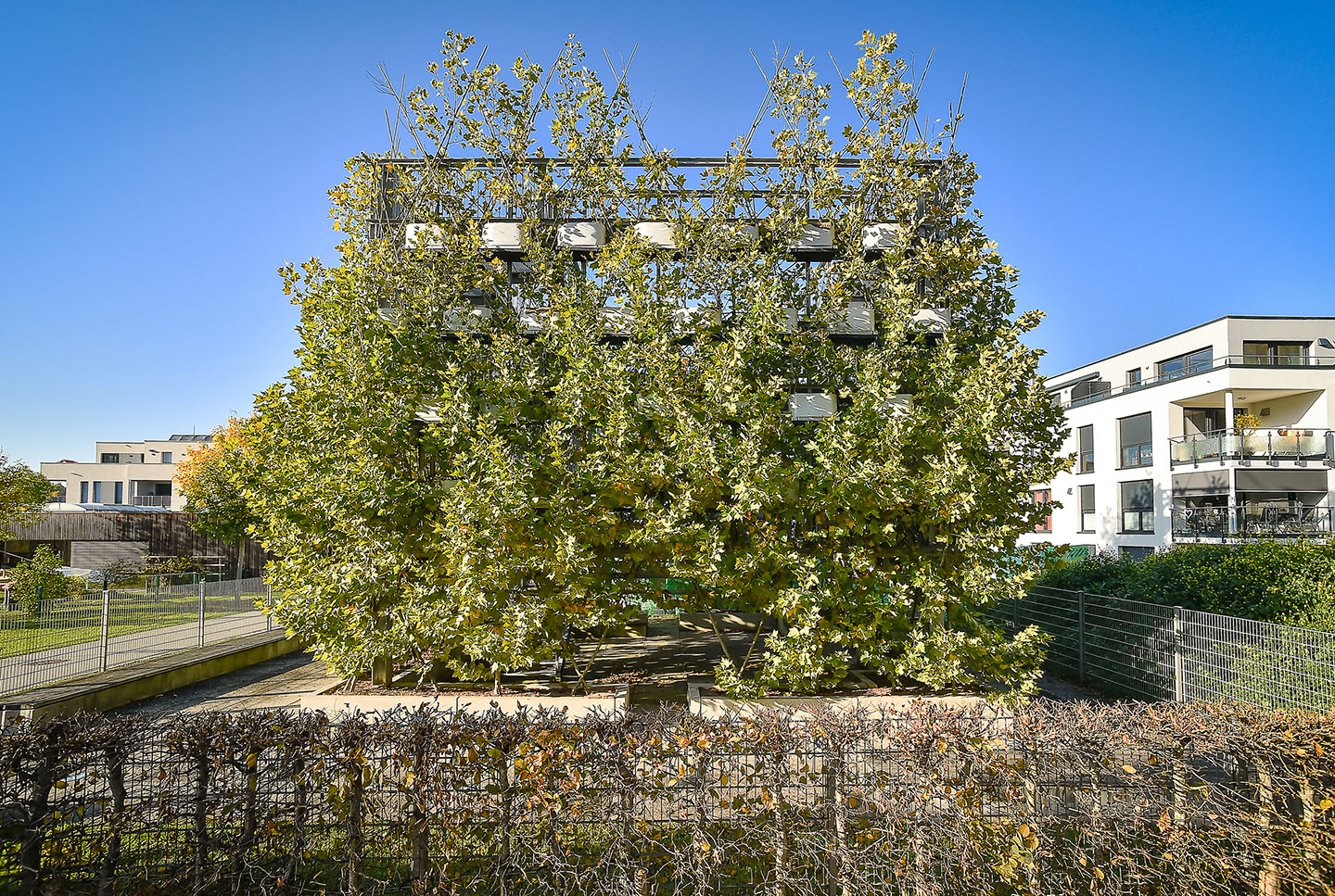
“Indeed, the greatest challenge for the architects and designers of the 21st century will be the research and application of the biological (and digital) sphere to architecture and design,” echoes Alberto Estévez, a professor of architecture at the International University of Catalonia, in Spain. “These botanical buildings will provide both the shade necessary to reduce the [urban heat island effect] in the summer, but also thermal comfort in the winter, certainly impacting public health for the better,” he says. Creations like the Plane-Tree-Cube, Flora Robotica, and the biomimicry elephant skin-inspired wall come with varying degrees of futuristic focus, but they are on the right path for anything that awaits us in the future. The Flora Robotica social garden, for example, could even serve as a prototype for helping plants colonize Mars and extreme environments, Estévez says.
Who wouldn’t fancy living in an ever-growing treehouse on the Red Planet?












